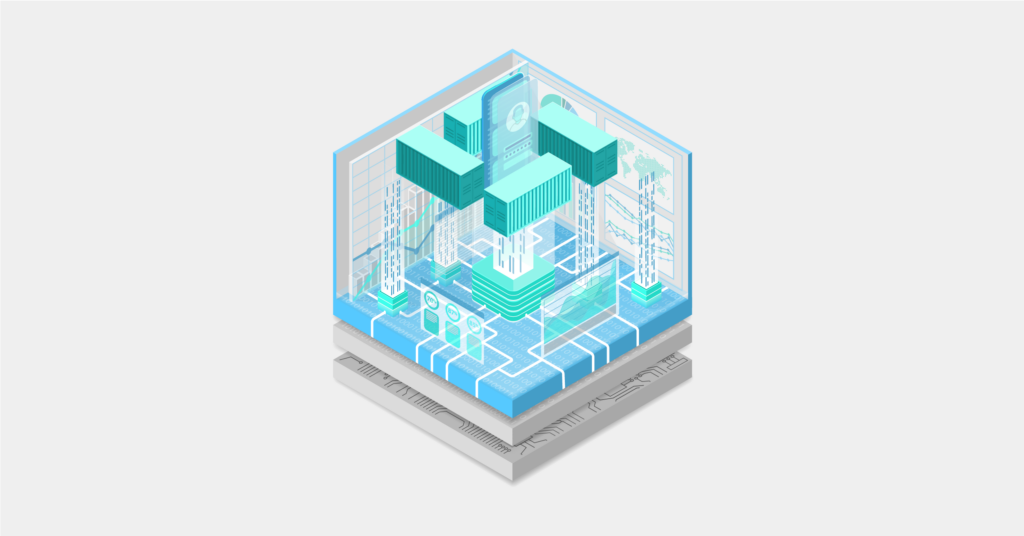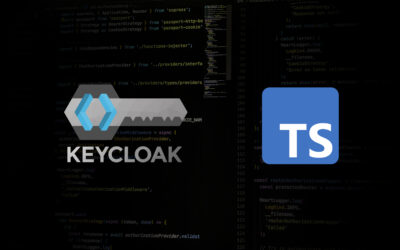Table of Content
How do we ensure the software we write in one machine runs without problems in another?
When multiple people are working on the same project, there might be differences in the setup and operating systems they each are using. Imagine all the different scenarios where the supporting environment is not the same; for example:
- A standardized production server and missing application dependency.
- The production server is configured with a different Python version than the development server.
- One developer is working on a Mac and another on a Windows machine.
Companies want to deploy software in a consistent and efficient way while ensuring the applications are always available, and there is a way to do just that: application containerization. If we think about a container, in general, we think of an object that holds things; perhaps what comes to mind is a shipping container. In the technical context, a container is a unit with some code and all the dependencies needed to run an application from any environment:
- Developer’s laptop
- Data Centers
- Virtual Machine
- Cloud Infrastructures
A container is a self-contained entity of software that can be distributed between different servers. For example, imagine you are a software engineer and start programming an application that can run on your laptop, then in a virtual machine, and then in a production server. Containerized applications will always be consistent in the way they run since they are isolated units where the developer creates a predictable environment that will not change in behavior.
Containers vs. VMs
A virtual machine consists of a copy of an operating system, and it requires a hypervisor to virtualize the hardware of the host machine. Unlike VMs, containers don’t need a copy of the entire operating system, only the particular components needed for the developed application to work.
Since virtual machines include a copy of the operating system, they require abundant amounts of memory and storage. On the other hand, containerization solutions are lightweight since they only consist of the application, the dependencies, and a configuration file. They also need a server or virtual machine, but they would all use the underlying operating system.
Thus, both containers and virtual machines have their benefits. Virtual machines provide the security of a dedicated operating system, while containers are lightweight, since they don’t require as much memory or as many resources.
Application Containerization and Orchestration with Kubernetes
We have seen how simple containers are, but what if you need to manage hundreds of containers in a system? Now there is added complexity in creating an infrastructure ecosystem, but this is achieved by deploying multiple containers in a cluster.
For that, you need a tool that takes care of the application containerization orchestration. Kubernetes is an open-source platform introduced by Google where the automation, deployment, and scaling of containerized applications is orchestrated. It is one of the most important and fastest-growing open-source projects in computing history.
When deploying containers, there are multiple aspects to take into account, such as health monitoring, provisioning, scaling, and load balancing. All of these can be done automatically, eliminating the manual process of provisioning and managing containers. Some application containerization tasks accomplished with Kubernetes include:
- Deployment
- Rollouts
- Self-Healing
- Load Balancing
- Scaling
This orchestration layer maintains containers running in a desired state by developers and also keeps service-level agreements.
Application Containerization and Microservices
Most companies are shifting from a monolithic architecture to microservices due to scalability and ease of management. With this architectural approach, an individual application is built with loosely coupled services, and each component’s responsibilities can be divided, enabling applications to scale easily. One of the most important aspects of the containerization of microservices is that there is not much difficulty in changing the code since each service is independently deployed.
As mentioned above in the Containers vs. VMs section, a container is very lightweight because it does not have an operating system of its own, which makes it a great pair for smaller services needed in the microservices architecture. In addition, each microservice communicates with the others via APIs or HTTP protocols; therefore, when one service is changed, there is no need to deploy and modify any other service (as opposed to the monolithic approach where everything was packaged together).
Why Choose Krasamo
Companies are shifting to microservices architecture since it provides agility and ease of management. Essentially, applications that change frequently and have to be redeployed quite often are suitable for containerization. According to Gartner, by 2022, approximately 75% of global enterprises will be running containerized applications in production, which is a considerable increase given that today only 30% of applications are deployed through containers.
If your company is looking for a digital transformation strategy and considering application containerization as a crucial part of it, you are in the right place! Krasamo is an app development company with more than 10 years of experience in technology solutions.












